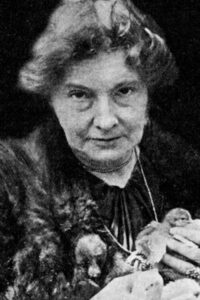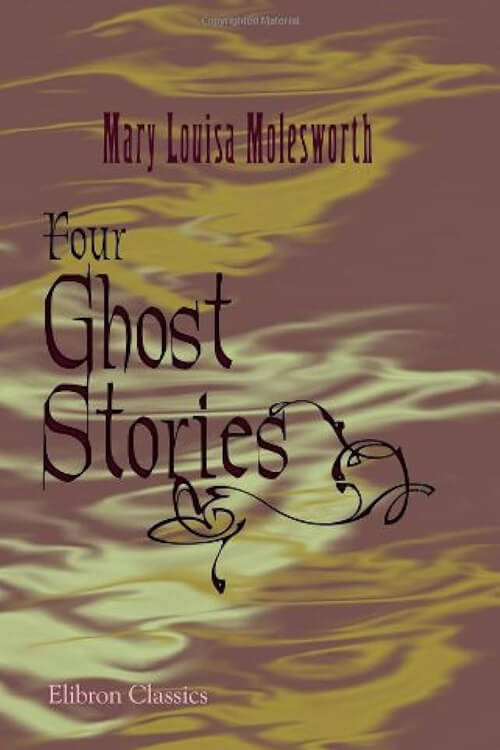
The Ebony Frame
To be rich is a luxurious sensation, the more so when you have plumbed the depths of hard-up-ness as a Fleet Street hack, a picker-up of unconsidered pars, a reporter, an unappreciated journalist; all callings utterly inconsistent with one’s family feeling and one’s direct descent from the Dukes of Picardy.
When my Aunt Dorcas died and left me seven hundred a year and a furnished house in Chelsea, I felt that life had nothing left to offer except immediate possession of the legacy. Even Mildred Mayhew, whom I had hitherto regarded as my life’s light, became less luminous. I was not engaged to Mildred, but I lodged with her mother, and I sang duets with Mildred and gave her gloves when it would run to it, which was seldom. She was a dear, good girl, and I meant to marry her someday. It is very nice to feel that a good little woman is thinking of you — it helps you in your work — and it is pleasant to know she will say “Yes,” when you say, “Will you?”
But my legacy almost put Mildred out of my head, especially as she was staying with friends in the country.
Before the gloss was off my new mourning, I was seated in my aunt’s armchair in front of the fire in the drawing room of my own house. My own house! It was grand but rather lonely. I did think of Mildred just then.
The room was comfortably furnished with rosewood and damask. On the walls hung a few fairly good oil paintings, but the space above the mantelpiece was disfigured by an exceedingly bad print, “The Trial of Lord William Russell,” framed in a dark frame. I got up to look at it. I had visited my aunt with dutiful regularity, but I never remembered seeing this frame before. It was not intended for a print but for an oil painting. It was of fine ebony, beautifully and curiously carved. I looked at it with growing interest, and when my aunt’s housemaid — I had retained her modest staff of servants — came in with the lamp, I asked her how long the print had been there.
Read or download Book
E. Nesbit
Edith Nesbit (married name Edith Bland; 15 August 1858 – 4 May 1924) was an English writer and poet, who published her books for children as E. Nesbit. She wrote or collaborated on more than 60 such books. She was also a political activist and co-founder of the Fabian Society, a socialist organization later affiliated with the Labour Party.
Biography
Nesbit was born in 1858 at 38 Lower Kennington Lane, Kennington, Surrey (now classified as Inner London), the daughter of an agricultural chemist, John Collis Nesbit, who died in March 1862, before her fourth birthday. Her mother was Sarah Green (née Alderton).
The ill health of Edith’s sister Mary meant that the family traveled for some years, living variously in Brighton, Buckinghamshire, France (Dieppe, Rouen, Paris, Tours, Poitiers, Angoulême, Bordeaux, Arcachon, Pau, Bagnères-de-Bigorre, and Dinan in Brittany), Spain and Germany. Mary was engaged in 1871 to the poet Philip Bourke Marston, but later that year she died of tuberculosis in Normandy.
After Mary’s death, Edith and her mother settled for three years at Halstead Hall, Halstead, north-west Kent, a location that inspired The Railway Children, although the distinction has also been claimed by the Derbyshire town of New Mills.
When Nesbit was 17, the family moved back to Lewisham in south-east London. There is a Lewisham Council plaque to her at 28 Elswick Road.
In 1877, at the age of 18, Nesbit met the bank clerk Hubert Bland, her elder by three years. Seven months pregnant, she married Bland on 22 April 1880 but did not initially live with him, as Bland remained with his mother. Their marriage was tumultuous. Early on, Nesbit found that another woman believed she was Hubert’s fiancée and had also borne him a child. A more serious blow came in 1886 when she discovered that her friend, Alice Hoatson, was pregnant by him. She had previously agreed to adopt Hoatson’s child and allow Hoatson to live with her as their housekeeper. After she discovered the truth, she and her husband quarreled violently and she suggested that Hoatson and the baby, Rosamund, should leave; her husband threatened to leave Edith if she disowned the baby and its mother. Hoatson remained with them as a housekeeper and secretary and became pregnant by Bland again 13 years later. Edith again adopted Hoatson’s child, John.
Nesbit’s children by Bland were Paul Cyril Bland (1880–1940), to whom The Railway Children was dedicated, Mary Iris Bland (1881–1965), who married John Austin D Phillips in 1907, and Fabian Bland (1885–1900). Bland’s two children by Alice Hoatson, whom Edith adopted, were Rosamund Edith Nesbit Hamilton, later Bland (1886–1950), who married Clifford Dyer Sharp on 16 October 1909, and to whom The Book of Dragons was dedicated, and John Oliver Wentworth Bland (1899–1946) to whom The House of Arden and Five Children and It were dedicated. Nesbit’s son Fabian died aged 15 after a tonsil operation; Nesbit dedicated several books to him, including The Story of the Treasure Seekers and its sequels. Nesbit’s adopted daughter Rosamund collaborated with her on Cat Tales.






